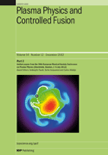
PLASMA PHYSICS AND CONTROLLED FUSION
Scope & Guideline
Transforming Theoretical Insights into Fusion Reality
Introduction
Aims and Scopes
- Fusion Plasma Dynamics and Stability:
Research focuses on understanding the dynamics of plasmas in various confinement configurations, particularly in tokamaks and stellarators, including stability analysis and the impact of different magnetic configurations. - Plasma Diagnostics and Measurement Techniques:
Innovative diagnostic methods for measuring plasma parameters are a core area, including techniques such as Thomson scattering, charge exchange recombination spectroscopy, and advanced imaging systems for real-time analysis. - Magnetic Confinement and Control Systems:
The journal emphasizes the development of control systems to manage plasma stability and confinement, including real-time feedback mechanisms and predictive modeling for disruption avoidance. - Modeling and Simulation of Plasma Behavior:
Extensive use of computational models to simulate plasma behavior under various conditions, including gyrokinetic simulations and MHD (magnetohydrodynamic) simulations, to predict plasma performance and dynamics. - Interfacial Physics and Material Interactions:
Studies on plasma-material interactions, including erosion and deposition processes, are crucial for developing materials that can withstand the harsh conditions in fusion reactors. - Advanced Fusion Concepts and Technologies:
Exploration of advanced concepts beyond conventional tokamaks, including spherical tokamaks, inertial confinement, and alternative fusion methods, alongside their technological implications.
Trending and Emerging
- Machine Learning and Data-Driven Approaches:
An increasing number of publications are utilizing machine learning techniques for predictive modeling, diagnostics, and optimization in plasma physics, highlighting a trend towards integrating AI with traditional plasma research. - Advanced Diagnostic Techniques:
There is a significant uptick in research dedicated to the development and application of advanced diagnostic tools that provide deeper insights into plasma behavior, including high-resolution imaging and real-time monitoring systems. - Integrated Modeling of Fusion Systems:
The trend towards integrated modeling approaches that encompass core, pedestal, and scrape-off layer physics is gaining momentum, reflecting a holistic view of plasma confinement and performance. - Plasma-Material Interactions:
Research focusing on the interactions between plasma and materials, particularly in the context of heat loads and erosion in fusion devices, is emerging as a critical area of study due to its implications for reactor design. - Exploration of Novel Fusion Concepts:
There is growing interest in alternative fusion concepts and configurations, including spherical tokamaks and hybrid systems, as researchers seek innovative pathways to achieve practical fusion energy.
Declining or Waning
- Basic Plasma Physics:
Research on fundamental plasma physics phenomena, while still important, appears to be less frequently published as the focus shifts toward applied research and technologies directly related to fusion energy. - Non-Fusion Plasma Applications:
There has been a noticeable decrease in papers focusing on non-fusion applications of plasma physics, such as space plasma or industrial plasma processing, as the journal increasingly prioritizes fusion-related research. - Static Theoretical Models:
Static theoretical models exploring equilibrium conditions without dynamic considerations have seen reduced interest, as researchers emphasize more dynamic, time-dependent studies and their implications for real-world fusion scenarios.
Similar Journals

PHYSICAL REVIEW LETTERS
Exploring the Depths of Physical Science ExcellencePhysical Review Letters, published by the American Physical Society, is a premier journal in the field of Physics and Astronomy renowned for its rapid dissemination of high-impact research findings. With a distinguished history dating back to 1958 and an impressive ranking of #13 out of 243 in the general physics category, it stands proudly within the Q1 quartile, placing it in the top 6% of journals in its field. The journal focuses on brief reports of significant fundamental research across all areas of physics, making it an essential resource for researchers, professionals, and students seeking to stay at the forefront of developments in their field. Although Physical Review Letters does not offer open access options, its rigorous peer-review process ensures a high standard of quality and relevance in its published articles. With an unwavering commitment to advancing the understanding of physical science, this journal is indispensable for those looking to make a genuine impact in their research endeavors.
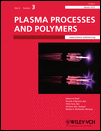
Plasma Processes and Polymers
Elevating Knowledge in the Realm of Plasma Processes and PolymersPlasma Processes and Polymers is a leading peer-reviewed journal published by WILEY-V C H VERLAG GMBH, focusing on the innovative field of plasma science and polymer technology since its inception in 2004. With an ISSN of 1612-8850 and an E-ISSN of 1612-8869, this journal has established its reputation within the scientific community, holding a commendable Q2 ranking in both Condensed Matter Physics and Polymers and Plastics for 2023. Recognized for its rigorous standards and impactful contributions to the field, it ranks in the top 20% of the Physics and Astronomy category and top 26% of the Materials Science category, as per Scopus metrics. Catering to researchers, professionals, and students alike, the journal publishes cutting-edge articles that advance understanding and application of plasma processes in polymer science, thereby bridging theoretical insights with practical implications. While currently not offering open access, it provides a critical platform for advancing knowledge and fostering innovation, making it essential reading for those at the forefront of polymer research and applications.
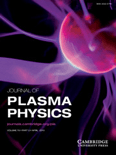
JOURNAL OF PLASMA PHYSICS
Exploring the dynamics of plasma phenomena.Welcome to the JOURNAL OF PLASMA PHYSICS, a premier publication dedicated to advancing understanding and research in the field of plasma physics. Published by Cambridge University Press, this journal has been a pivotal resource since its inception in 1967, supporting scholars and professionals engaged in the innovative exploration of plasma phenomena. With an impressive Q1 rating in Condensed Matter Physics, the journal not only holds a significant position in the academic community but also ranks within the top 50th percentile in the Scopus database. Although it currently does not offer open access, the journal provides a wealth of valuable research contributions aimed at fostering knowledge and collaboration among researchers, professionals, and students alike. The Journal of Plasma Physics is committed to publishing high-quality articles that push the boundaries of knowledge, ensuring its vital role in the ever-evolving landscape of physics research.

DOKLADY PHYSICS
Advancing the Frontiers of Physics and Engineering.DOKLADY PHYSICS is a prominent academic journal dedicated to advancing knowledge in the fields of computational mechanics, mechanics of materials, and general physics and astronomy. Published by MAIK NAUKA/INTERPERIODICA/SPRINGER, this journal has established itself as a crucial resource for researchers and professionals keen on exploring the intricacies of physical phenomena and engineering applications. With its ISSN 1028-3358 and E-ISSN 1562-6903, DOKLADY PHYSICS has been contributing to scientific discourse since its inception in 1996 and continues to provide a platform for innovative research up to 2023. Despite its current Q3 ranking in several key categories, the journal maintains an inclusive approach, striving to influence both academic and practical aspects of its fields. While the journal may not be open access, it remains a vital publication for those interested in high-quality research, as reflected in its Scopus ranking positions across various engineering and physics categories.

Kinetic and Related Models
Unveiling New Dimensions in Kinetic and Related ModelsKinetic and Related Models, published by the American Institute of Mathematical Sciences (AIMS), is a distinguished journal that focuses on innovative research in the realms of kinetic theory, modeling, and numerical analysis. With an ISSN of 1937-5093 and an E-ISSN of 1937-5077, this journal offers critical insights and advances in mathematical sciences, making significant contributions to both theoretical and practical applications in these fields. As of 2023, it holds a respectable Q2 category ranking in both Modeling and Simulation and Numerical Analysis, reflecting its impact and relevance in the academic community, with Scopus ranks positioning it favorably among its peers. Although it operates through a subscription model, the journal is key for researchers aiming to remain at the forefront of mathematical modeling methodologies and numerical techniques. Established to serve the academic community since 2010, Kinetic and Related Models fosters interdisciplinary collaboration, catering not only to scholars but also to professionals and students looking to deepen their understanding and application of kinetic models in various recent contexts.

ACTA PHYSICA SINICA
Advancing the Frontiers of Physics and AstronomyACTA PHYSICA SINICA is a prominent journal published by the Chinese Physical Society, dedicated to the dissemination of groundbreaking research in the field of physics and astronomy. Established in 1993, this journal has consistently contributed to the scientific community by publishing high-quality articles that cover a wide range of topics within general physics and related disciplines. Although currently classified in Q4 of the physics and astronomy category by Scopus, ACTA PHYSICA SINICA plays an important role in fostering collaboration and communication among researchers in China and around the world. With a substantial readership, this journal is poised to remain a valuable resource for professionals, researchers, and students alike. By providing in-depth analysis and insights, it aims to advance the understanding and application of physical principles in various technological and scientific advancements. The journal is accessible via subscription, ensuring that contributors and readers can engage with the evolving landscape of physics research. For more information, visit the publisher's website.
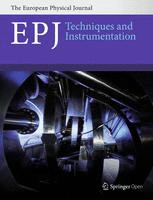
EPJ Techniques and Instrumentation
Unlocking new possibilities in scientific inquiry through advanced techniques.EPJ Techniques and Instrumentation is a leading journal published by Springer that focuses on advancing the field of instrumentation and measurement techniques across various disciplines. With a commitment to open access since 2014, this journal ensures that the latest research is freely available to academics, providing an inclusive platform for the dissemination of innovative methodologies and technological advancements. The journal serves as an essential resource for researchers, professionals, and students dedicated to the development and application of cutting-edge techniques in their respective fields. While the journal's scope encompasses a wide range of topics, it consistently encourages interdisciplinary collaboration and the exchange of ideas. As a cornerstone publication in the scientific community, EPJ Techniques and Instrumentation is poised to impact the trajectory of future research, fostering a deeper understanding and better utilization of instrumentation in scientific inquiry.

Moscow University Physics Bulletin
Advancing Knowledge Through Innovative ResearchMoscow University Physics Bulletin is a distinguished journal published by PLEIADES PUBLISHING INC, focusing on a broad spectrum of topics within the field of physics and astronomy. Since its inception, the journal has championed the dissemination of innovative research and advancements, making significant contributions to the academic community. Although currently categorized in the Q4 quartile and ranked #208/243 in the general physics and astronomy field by Scopus, it provides a valuable platform for emerging ideas and discussions in the sector. The journal's publication span, encompassing crucial years from 1975 to 1977, 1982 to 1989, and 2009 to 2024, showcases its resilience and commitment to advancing knowledge. While the journal follows a traditional access model, its content remains pivotal for researchers, professionals, and students aiming to stay abreast of the latest developments in physics. With contributions reflecting both theoretical advancements and practical applications, Moscow University Physics Bulletin is an essential resource for anyone looking to deepen their understanding of contemporary physics.
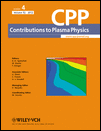
CONTRIBUTIONS TO PLASMA PHYSICS
Connecting Ideas and Innovations in Plasma StudiesCONTRIBUTIONS TO PLASMA PHYSICS is a distinguished journal dedicated to advancing the field of plasma physics, published by WILEY-V C H VERLAG GMBH. Since its inception in 1988, this journal has provided a platform for high-quality research, fostering collaboration and dissemination of knowledge in the condensed matter physics domain. With its current ranking of Q3 in the 2023 assessments, the journal is recognized for its contributions to the discipline, as indicated by its position in the Scopus rankings (Rank #252/434) and 42nd percentile within its category. Researchers and professionals engaged in plasma physics are encouraged to submit their work, as the journal aims to publish innovative studies that push the boundaries of current understanding and application in plasma phenomena. While currently not offering open access, the journal remains a vital resource for insights into the complexities and advancements in plasma research, operating from its base in Germany.

PHYSICS OF PLASMAS
Advancing Knowledge in Fusion and Astrophysical PlasmasPhysics of Plasmas is a premier peer-reviewed journal published by AIP Publishing, focusing on the vital and interdisciplinary field of plasma physics. With an ISSN of 1070-664X, this journal presents cutting-edge research that spans a wide array of topics including fusion energy, astrophysical plasmas, and industrial applications of plasma technologies. As a recognized leader in the field, it holds a prestigious Q1 ranking in Condensed Matter Physics, reflecting its high impact and quality of published work. The journal's scope encompasses both fundamental studies and innovative applications, serving as an essential resource for researchers, professionals, and students alike. Although it does not offer open access, its rigorous selection process ensures that only the most significant contributions are highlighted. With a convergence of expertise from 1994 to 2024, Physics of Plasmas continually shapes the future of plasma research and technology, making it a critical avenue for sharing discoveries and advancements in this dynamic area of physics.